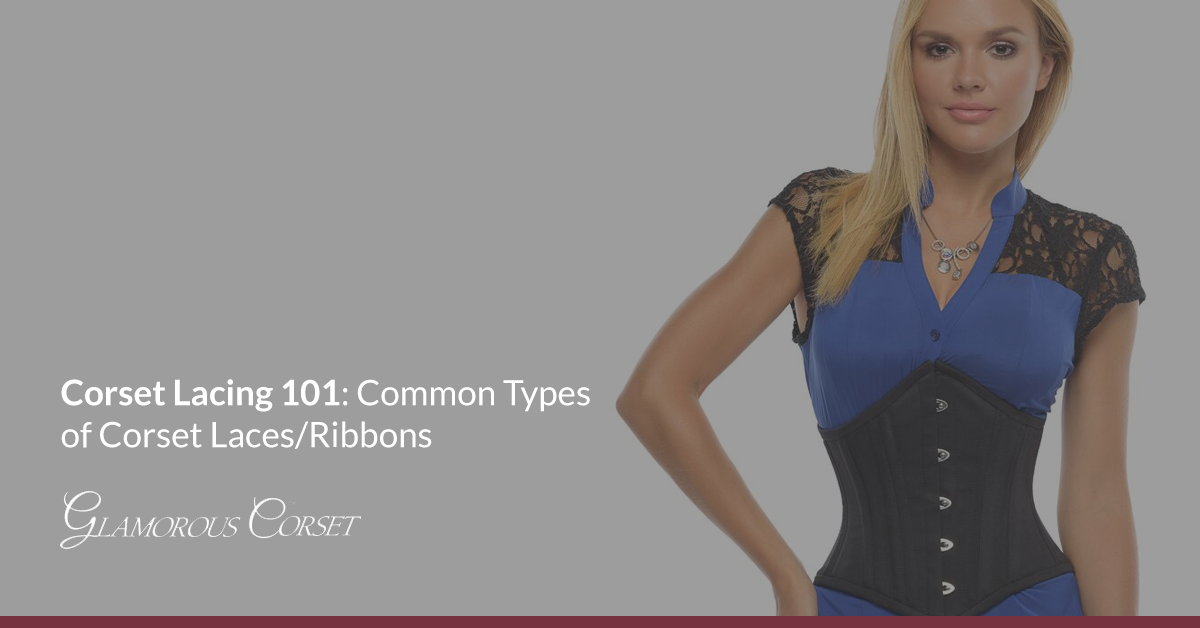Blog
Corset Lacing 101: Common Types of Corset Laces/Ribbons
Most of us learn how to lace our shoes at the tender age of five or six, depending on how dexterous our little fingers are. Unfortunately, there is no set age at which we learn to lace our corset, probably due in large part to the fact that corsets are no longer part of the average woman’s wardrobe.
Before you start experimenting with fancy lacing patterns, you first need to find the right laces for your corsets and your purposes. If you’re tightlacing, for example, you’re not going to want a flimsy, single-face satin ribbon that will wear and break sooner than hardier products. This should really be reserved for costume corsetry that is only meant to stay on for a few minutes of bedroom fun.
So, what types of corset laces and ribbons should serious waist trainers rely on? Which options will provide the most comfort and durability for practical purposes and which offer added cosmetic appeal when you want your corsets to double as attractive outerwear? Here’s what you need to know before you lace and go.
Double-Face Satin Ribbon
While satin ribbon tends to work better for bows in your hair than lacing in your corset, you’ll find that there are products that can provide the function you need, along with the shine and luxury that only comes from satin. The trick is to skip single-face satin ribbon (which is satiny on one side and rough on the other) in favor of double-face products that feature the slick appeal of satin on both sides.
You’ll spend a bit more, but you definitely get what you pay for with a tough grain that holds up well under tension and won’t stretch out. Just in case you do need a replacement, you’ll be happy to discover that satin ribbon is easy to come by at just about any craft or fabric store. Just make sure to flip the ribbon so you know it’s double-face. You should also consider rounded satin rat-tail cord, which offers strength, beauty, and very little bulk (as opposed to some other cords).
Round Cords
In most cases, round cords are preferable to flat because they tend to be stronger and more durable than flat laces. Unfortunately, they can be a bit bulky and they aren’t usually the most attractive option, but they definitely get the job done, and they’re ideal for everyday wear if you’re a long-term waist trainer. There are several types of round cords to consider, including round satin rat-tail cord, as noted above, as well as polyester cord and 550 paracord.
Round polyester cord is a great choice for several reasons. First, it’s cost-effective, which is why you’ll frequently see it used in off-the-rack corsetry. It’s inexpensive and extremely strong and resilient, thanks to the use of synthetic fibers.
This type of cord has little bulk, which is great for wear, but the thin cord could cause some discomfort to hands when you’re pulling it tight. It also has a bit of stretch, and this can be problematic when you’re dealing with very long laces, so you might want to trim down the excess to make it more manageable.
550 paracord, so called because it can support 550 pounds of tension before snapping, should never break. Unfortunately, it is pretty bulky and it doesn’t always hold a knot as well as it’s polyester competitors. That said, if you need to repel down a cliff face, all you have to do is unlace your corset and get to it.
Shoelaces
Flat shoelaces are a decent budget option in that they’re cheap, easy to find, and they come in dozens of colors to match any corset. They’re strong and fairly durable, and if you find a slim width, you won’t have much bulk, but they’re best used as a short-term replacement in a pinch, just until you can lay your hands on something better.
Stay up-to-date with weekly blog posts, waist training tips, and the chance to win one of our monthly corset giveaways, like us on Facebook & subscribe to our mailing list today! Want to find the perfect steel boned corset? Shop some of our favorites: underbust corsets, overbust corsets, corset dresses. You can also shop our corsets by material: cotton corsets, denim corsets, leather corsets, mesh corsets, pvc corsets, and satin corsets.

My name is Rachel, I am the owner of Glamorous Corset, a small business founded by me in 2010. Back In 2005, I was in a car accident that left me with a herniated disk. Much to my surprise I learned steel boned corsets were beneficial to several medical injuries including mine. I was always intrigued with corsetry, their history and their beautiful aesthetic. I love sharing knowledge about corsets, educating my wonderful readers and breaking the negative stigma related to corsetry. In combination with my years of research and personal experience I hope my articles are useful and can help anyone who has struggled with some of the same things I have. More about me…


